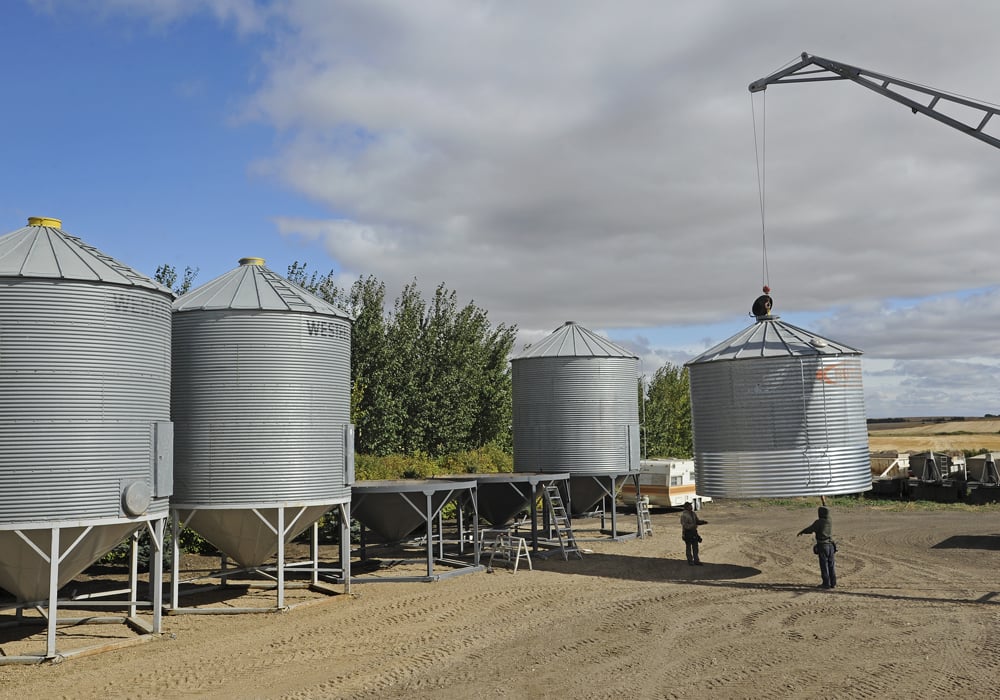Will a federal government with no Liberal MPs from Saskatchewan or Alberta be inclined to take a different approach on the touchy issue of seed royalties?
The president of the Alberta Federation of Agriculture thinks so.
And Lynn Jacobson is hoping the results of a recent producer survey on seed royalties will convince Ottawa to look at seed royalty options that are more palatable to western Canadian farmers.
“One of the first things that became apparent through the survey … is that producers do not like either of the two funding models that have been proposed so far,” said Jacobson.
Read Also

Using artificial intelligence in agriculture starts with the right data
Good data is critical as the agriculture sector increasingly adopts new AI technology to drive efficiency, sustainability and trust across all levels of the value chain.
“I think we all need to go back to the drawing board and identify some different scenarios.”
Earlier this year, general farm organizations in Manitoba, Saskatchewan and Alberta launched an online survey seeking producer opinions on seed royalty collection mechanisms.
Results of the survey released last week suggest there is limited support for either of the two funding models that have been proposed so far — end point royalties or trailing contracts on farm-saved seed.
Jacobson said many farmers that responded to the survey were strongly opposed to any new system that would allow seed developers to collect royalties on farm-saved seed.
“They see it as an attack on farm saved seed,” he said.
Added Todd Lewis, president of the Agricultural Producers Association of Saskatchewan: “What we heard from producers is that they are not in a position to absorb extra costs.…
“As price-takers, farmers have little room in their margins for added expenditures. So there is little support for yet another expense to add to our bottom lines.”
In 2018, Agriculture Canada and the Canadian Food Inspection Agency launched Canada-wide consultations to determine if new seed royalties are needed and supported by stakeholders in the Canadian agriculture sector.
Supporters said a new seed royalty collection system is necessary to attract new investments in plant breeding and ensure that existing plant breeding programs are properly funded.
Additional revenues are critical to ensure that Canada’s grain farmers remain competitive and have access to the newest and most productive seed varieties possible, they added.
Opponents — including many commercial grain farmers — said the introduction of additional seed royalties will be another drain on growers’ profit margins, which are already razor thin.
Some farmers claimed the consultations — facilitated by Agriculture Canada and the CFIA — did not adequately seek the views of primary producers, who will ultimately be expected to absorb the additional costs if a new royalty system is introduced.
Earlier this year, APAS, along with the AFA and the Keystone Agricultural Producers in Manitoba, launched an online survey to gauge producers’ opinions and gather feedback from growers.
More than 1,000 farmers responded to the survey.
One of the key messages they sent is that the majority of farmer respondents do not support end point royalties or trailing contracts.
Results from the survey also suggested that:
- More than 70 percent of respondents are either satisfied or very satisfied with the current approach to varietal development for pulses and cereal grain crops, including wheat, barley and oats.
- Fifty-seven percent of respondents are either satisfied or very satisfied with the current approach to varietal development for canola.
- Forty-seven percent of respondents agree that increased investment in crop development is required, provided producers have oversight into how much is collected and what the funds are used for.
Jacobson said he expects the survey’s findings to carry some weight with federal politicians.
“I’m optimistic that producers’ views will be considered,” he said.
“(Ignoring farmers’ opinions would be) a bit like pouring gas on a fire, and I don’t think Ottawa wants to do that, especially the way the election went in Western Canada.”
Jacobson said there is still a feeling among some grain growers that farmer concerns haven’t been properly considered.
Some farmers who responded to the survey indicated that they might be willing to invest more producer dollars in plant breeding and variety development, but only if growers have more say in how much money is generated and how it is spent.
If and when seed royalty consultations resume, Ottawa should widen the discussions, hold meetings in more western Canadian locations and consider other funding options that are more amenable to primary producers, Jacobson said.
“Our outreach confirms that they (farmers) don’t feel they’ve been sufficiently engaged in consultations to date,” he said.
“It’s our hope that AAFC will work to rectify this before any further decisions are made.”
The prairie farm groups will be discussing the seed royalty issue this week during Canadian Federation of Agriculture meetings in Ottawa.
Results of the survey will also be discussed with the federal agriculture minister once the Liberal government announces its cabinet.
In an Oct. 23 news release, KAP President Bill Campbell said prairie farm groups “look forward to working with the federal government now that the election is complete to ensure that any new seed royalty structure is ultimately fair for farmers and producers.
“Plant breeding needs to be funded in a manner that is fair and driven by the interests of farmers.”
Results of the survey can be viewed online here, while a summary of the survey results can be viewed here.
















